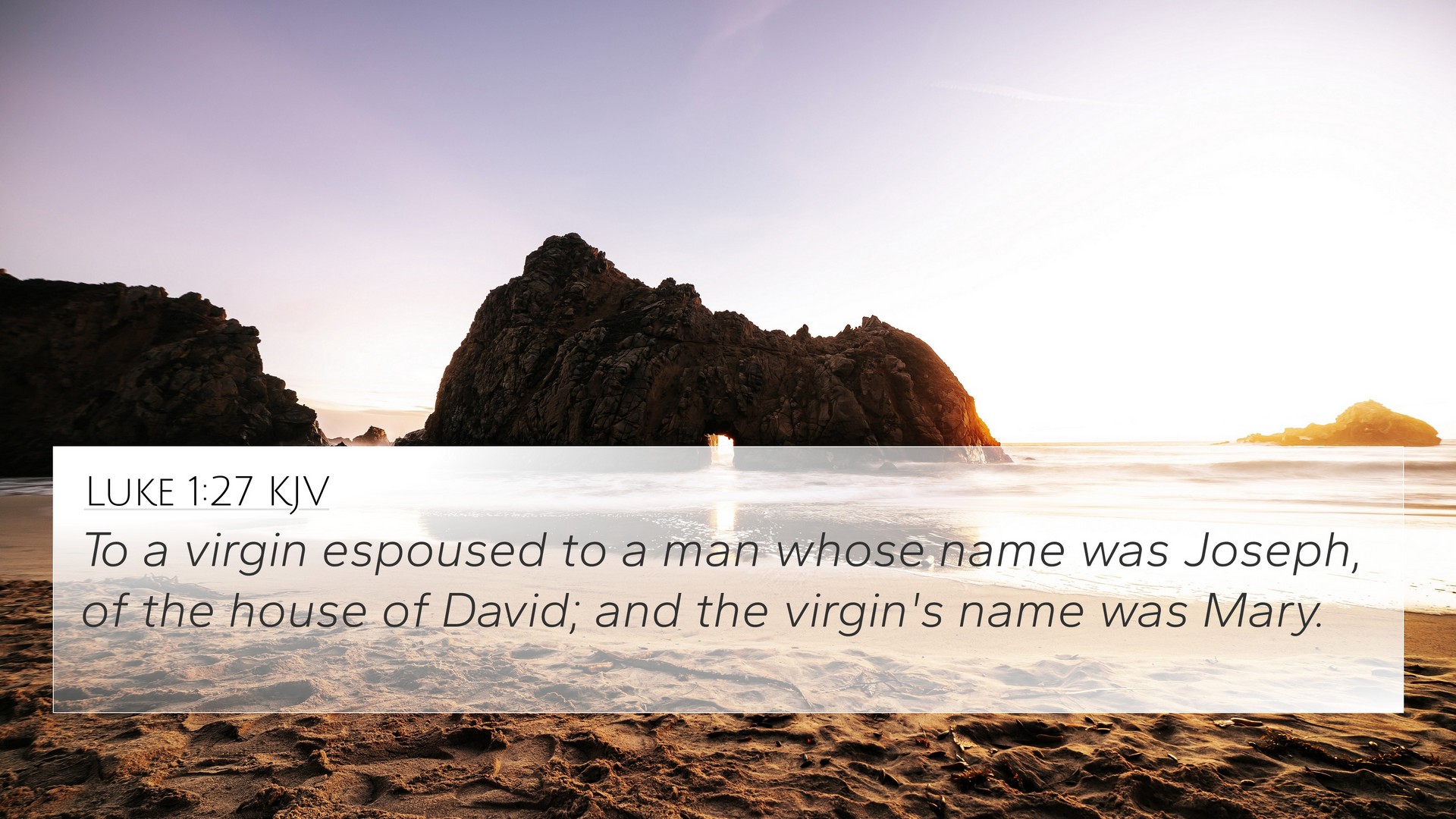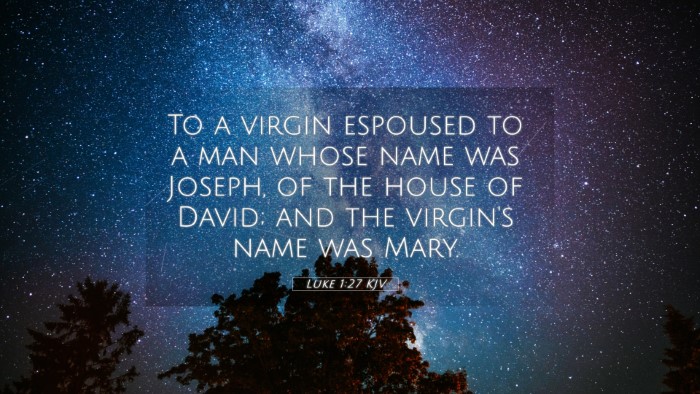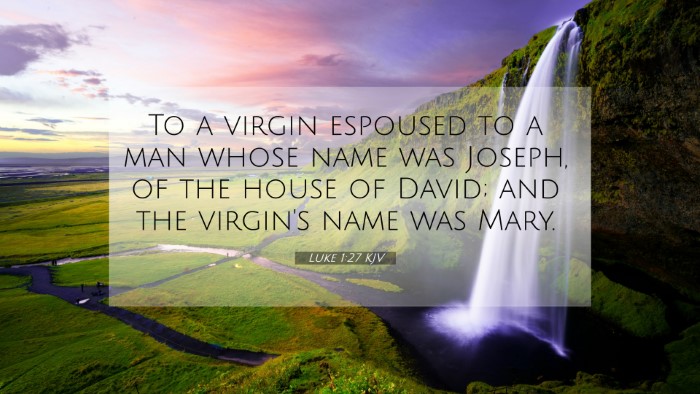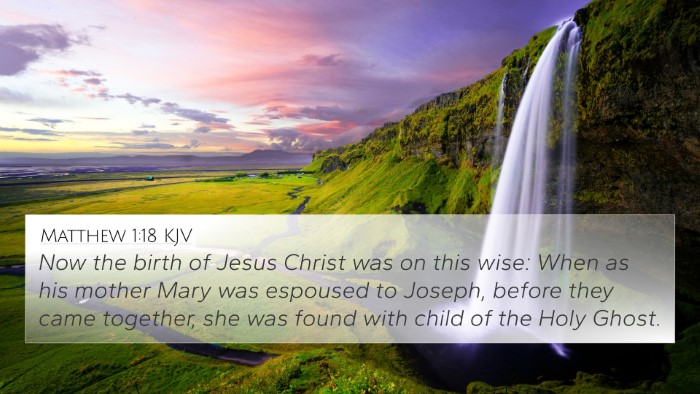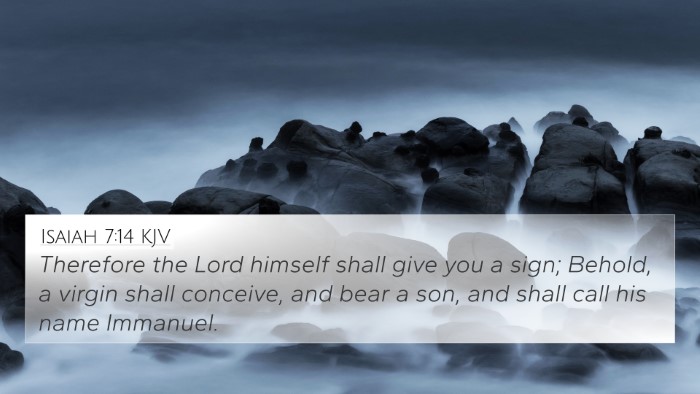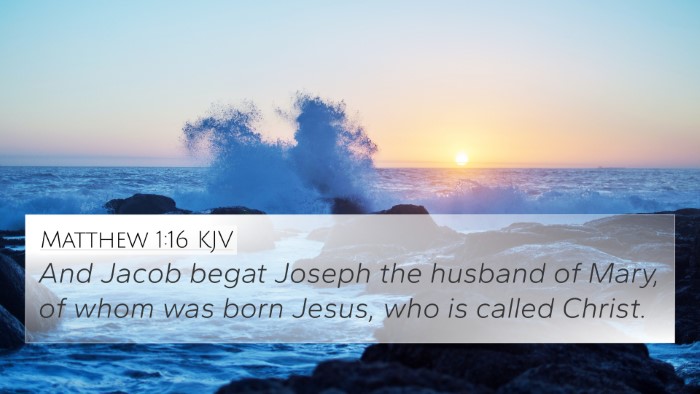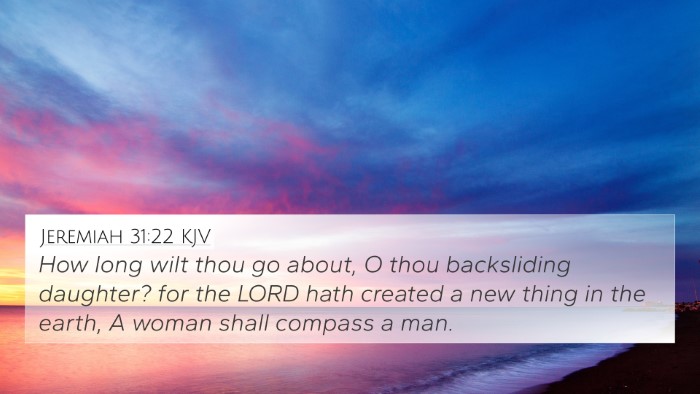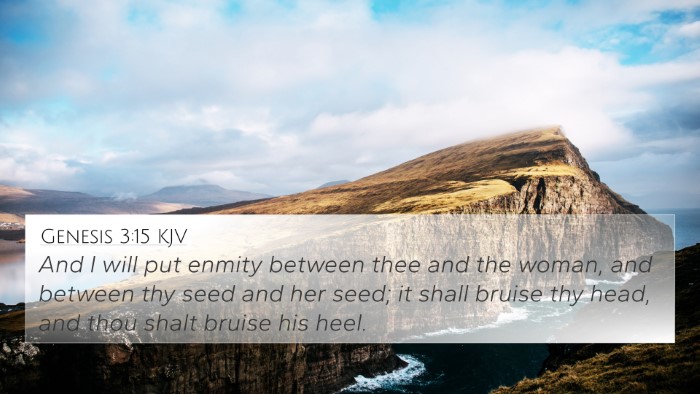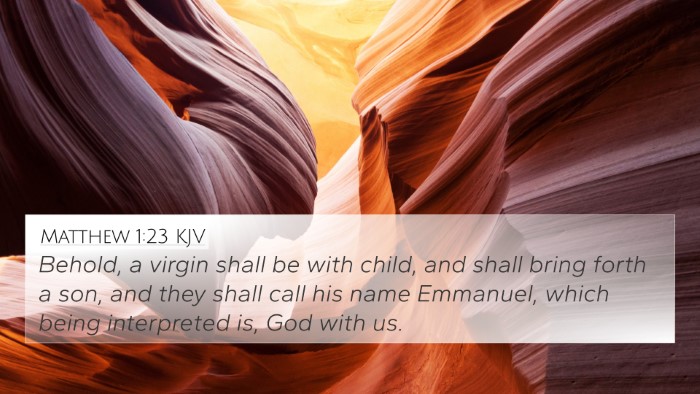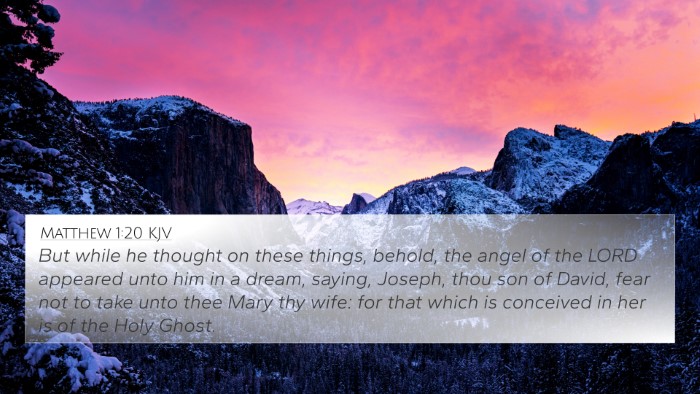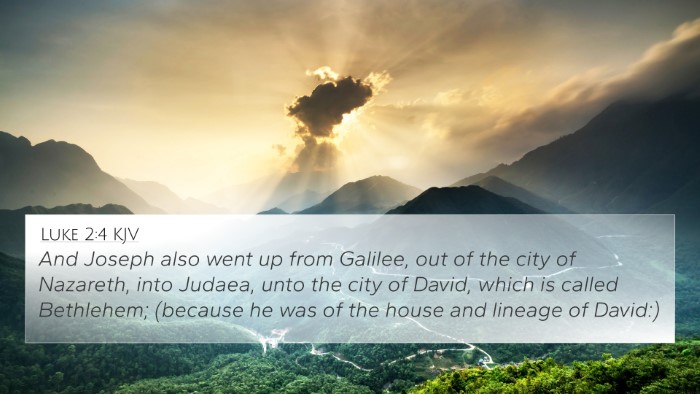Understanding Luke 1:27
Luke 1:27 states: "To a virgin espoused to a man whose name was Joseph, of the house of David; and the virgin's name was Mary." This verse plays a crucial role in the narrative of the Annunciation, when the angel Gabriel visits Mary to announce that she will bear the Messiah. The details provided in this verse are rich with theological significance and cultural context.
Contextual Background
The verse is set within the first chapter of Luke, which introduces the birth narratives of John the Baptist and Jesus Christ. Luke emphasizes the miraculous nature of Jesus' conception and birth. The mention of Mary being a virgin and her betrothal to Joseph highlights the fulfillment of prophetic scriptures and sets the stage for the miraculous birth.
The Virgin Mary
Mary's Virginity: The term "virgin" signifies her purity and the divine nature of the conception. Commentaries note that this establishes a significant theme in the Gospels regarding the incarnation of Christ. Matthew Henry highlights that Mary's purity was essential for the holiness of the child she would bear.
Connections to Joseph
Joseph's Role: The text refers to Joseph as being of the house of David, connecting Jesus to David's royal lineage, an important aspect of messianic prophecy. Albert Barnes points out that Joseph’s lineage fulfills the requirement of the Messiah being from David's line, which is crucial for understanding the fulfillment of Old Testament prophecy.
Theological Implications
Divine Selection: Mary’s selection as the mother of Jesus emphasizes God’s sovereignty and grace. Adam Clarke discusses how God chose someone humble and of low status (a young virgin) to bring forth the Savior, demonstrating that divine purposes often come through unlikely circumstances.
Inter-Biblical Connections
This verse not only stands alone but also builds connections with various other scriptures, illustrating a seamless narrative across the Bible:
- Isaiah 7:14: The prophecy of a virgin bearing a son.
- Matthew 1:18-25: Joseph's dream and public response to Mary's pregnancy.
- Luke 2:4-5: Joseph's role in the events leading to Jesus's birth.
- Micah 5:2: The prophecy concerning the birthplace of the Messiah.
- Galatians 4:4: The fullness of time for Christ's coming.
- Genesis 49:10: The lineage of Judah leading to Jesus.
- Revelation 12:1-2: Symbolic representation of Mary as Israel or God's chosen people.
- Luke 1:35: The angel’s explanation of the Holy Spirit's role in Jesus' conception.
- Romans 1:3: Connection of Christ to the lineage of David.
- Hebrews 7:14: Affirmation of Jesus' priestly lineage from Judah.
Conclusion
The verse Luke 1:27 encapsulates significant theological themes, such as the purity of Mary, the lineage of Jesus, and divine intervention in human history. The interconnectedness of scripture is evident in the various cross-references that highlight God's plan for salvation through Jesus Christ. By exploring the parallels and thematic connections in the Bible through cross-referencing, one gains a deeper understanding of God's overarching narrative.
Tools for Bible Cross-Referencing
For those interested in exploring biblical texts and their connections further, various tools for cross-referencing can enhance your study:
- Bible concordance
- Bible cross-reference guide
- Cross-reference Bible study resources
- Comprehensive Bible cross-reference materials
Using these tools can help identify and explore the connections between Bible verses, enriching your understanding of scripture and its thematic elements.
